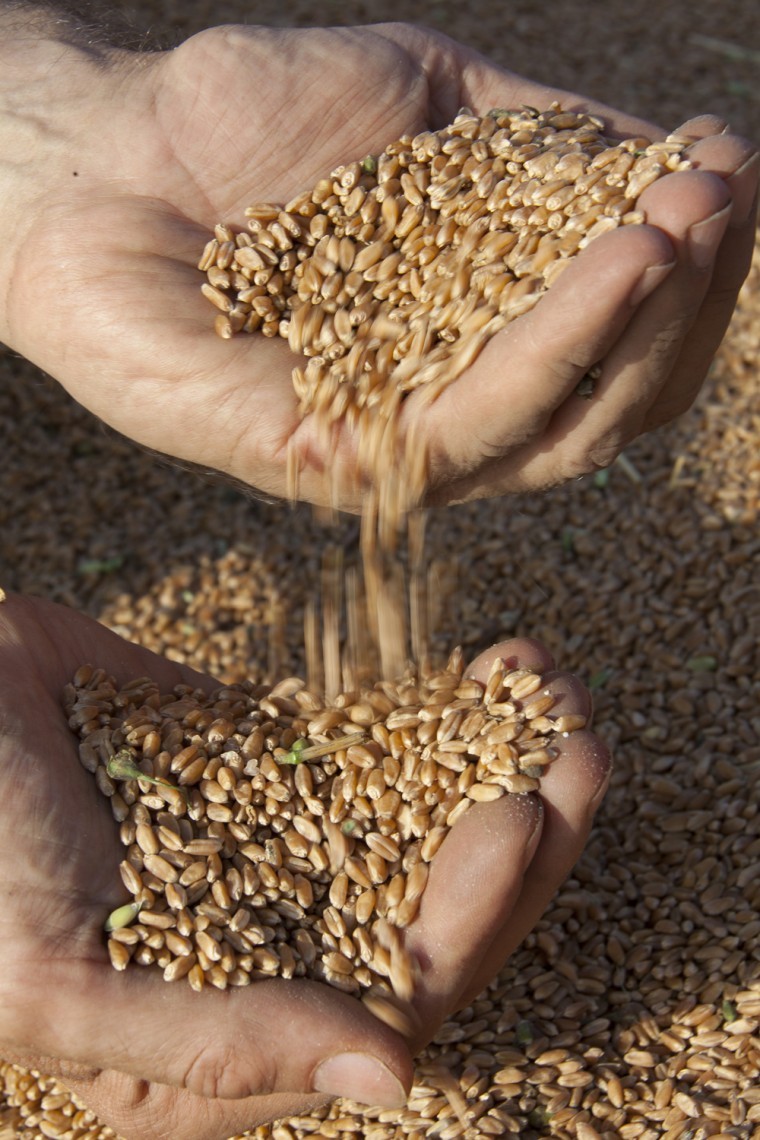UK scientists have created a synthetic molecule that, when applied to crops, has been shown to increase the size and starch content of wheat grains in the lab by up to 20%. Like the universities of Surrey and Queensland research reported here, this approach avoids genetic modification.
Rothamsted Research and Oxford University’s study, published in the journal Nature, describes using synthetic “precursors” of the sugar trehalose 6-phosphate (T6P). Rothamsted Research identified this naturally occurring sugar as being crucial in controlling how wheat uses sucrose, the main fuel generated by photosynthesis. Sucrose is key to the development of wheat grains. They found that the more T6P that is available to wheat grains as they grow, the greater the yield.
Using the expertise of Oxford University’s chemistry research laboratory, a modified version of T6P that could be taken up by the plant and then released within the plant in sunlight was developed. This T6P “precursor” was added to a solution and then sprayed on to the plants, causing a pulse of T6P, which resulted in more sucrose being drawn into the grain to make starch. When tested in the lab, under controlled environmental conditions, this approach resulted in an increase in wheat grain size and yield of up to 20%.
The study also demonstrated that application of the precursor molecule could enhance plants’ ability to recover from drought, which could help farmers to overcome difficult seasons more easily in the future.
Professor Ben Davis, of the department of chemistry at Oxford , said: “The ‘green revolution’ in the twentieth century was a period where more resilient, high yield wheat varieties were created, an innovation that has been claimed to have helped save one billion lives. By developing new chemical methods based on an understanding of biology, we can secure our food sources and add to this legacy.”
Dr Matthew Paul, senior scientist (plant biology and crop science) at Rothamsted Research, said: “The next stage of work is to replicate this experiment as much as possible in the field in different environments, for which we’ll need to understand how to scale up production of the T6P precursor and determine the effect that more variable conditions may have on results.”
Wheat plants were grown until each plant flowered, after which varying concentrations of T6P solution (between 0.1 and 10 mM) were added to different plants to assess the effect each concentration had on growth. The wheat was then sprayed with the solutions either on the ears or the whole plant at intervals of five days after the plants first flowered, with just one application sufficient to increase yield. The plants were then harvested once ripe, with the grains weighed and analysed for amount of starch and protein present. To test the responses to drought conditions, the plants were grown until just before the wheat plant developed its stem. It was then deprived of water for ten days, with T6P solutions being added on the ninth of these days. Plants were harvested after re watering to assess biomass recovery after the drought period.




